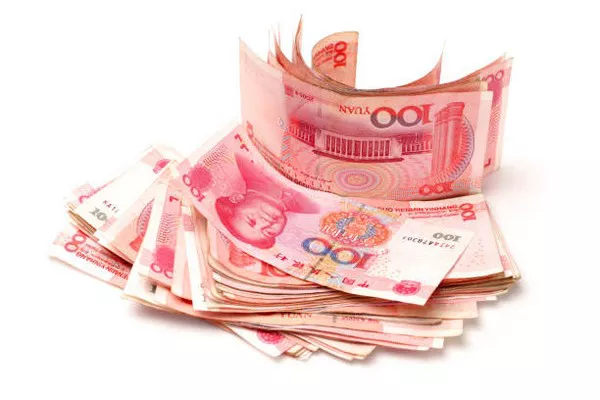China’s rich history, marked by various dynasties, revolutions, and socio-political changes, has left behind a treasure trove of artifacts, including banknotes. These pieces of paper not only tell stories of economic evolution but also reflect the cultural and political dynamics of different eras. From the opulent designs of imperial currency to the utilitarian notes of modern times, old Chinese banknotes hold significant value for collectors and historians alike. In this article, we delve into the factors that influence the worth of these notes, explore notable specimens, and offer tips for collectors on preservation and assessment.
Historical Context:
Chinese banknotes have a long and fascinating history dating back to the Tang Dynasty (618-907 AD), where the first documented use of paper money occurred. However, it wasn’t until the Ming Dynasty (1368-1644) that paper money became more widely circulated. The Qing Dynasty (1644-1912) further refined the use of banknotes as a means of currency, with various regional and local banks issuing their own notes.
Significant political upheavals, such as the fall of dynasties and the rise of republics, greatly influenced the issuance and value of Chinese banknotes. The establishment of the Republic of China in 1912 marked a transition from imperial to modern currency. The Chinese Civil War, which lasted from the 1920s to 1949, led to the issuance of notes by different factions and governments, contributing to the diversity of designs and denominations.
The victory of the Communist Party in 1949 led to the issuance of new currency under the People’s Republic of China. Since then, the Chinese Renminbi (RMB) has undergone several reforms and iterations, each reflecting the economic policies and ideologies of the ruling regime.
Factors Influencing Value:
Rarity:
One of the primary factors determining the value of old Chinese notes is their rarity. Notes issued during specific periods or with limited circulation tend to be more sought after by collectors. For example, banknotes from war-torn eras or those with low printing numbers are considered rare and thus command higher prices in the market.
Condition:
The condition of a banknote significantly impacts its value. Notes that are well-preserved, free from folds, tears, or stains, are highly desirable to collectors. Mint-condition specimens often fetch premium prices at auctions compared to those with visible signs of wear and tear.
Design and Artwork:
The aesthetic appeal of Chinese banknotes, characterized by intricate designs and symbolic imagery, adds to their value. Notes featuring iconic landmarks, historical figures, or cultural motifs are particularly prized by collectors for their artistic merit. Intricately engraved details and vibrant colors enhance the visual allure of these notes, making them coveted pieces for enthusiasts.
Historical Significance:
Banknotes from pivotal moments in Chinese history hold significant historical significance and thus greater value. Notes issued during revolutionary periods, such as the Cultural Revolution, or those bearing the likeness of influential leaders like Mao Zedong, carry immense historical weight. These artifacts provide insights into the socio-political landscape of their respective times and are highly valued for their historical context.
Specific Notable Banknotes:
Several Chinese banknotes stand out for their historical significance, rarity, and artistic appeal:
China Pick 902: This colorful millennium celebration note commemorates China’s 2000th anniversary and features intricate designs symbolizing prosperity and unity.
China Pick 876a1: A large denomination note adorned with a foundry worker design, reflecting the industrialization efforts of post-revolutionary China.
China Pick 875a2: The 2-Yüan bill with green variants and a craftsman image embodies the ideals of labor and craftsmanship under Communist rule.
China Pick 907: The 100 Yüan note featuring Chairman Mao, a ubiquitous symbol of Chinese communism and revolutionary zeal.
China Pick 877f: An interesting and popular banknote known for its unique design elements and historical significance.
China Pick 884a: The 1980 1 Yüan bill featuring ethnic group members and the Great Wall, representing China’s cultural diversity and historical heritage.
Recent Auction Prices:
In recent years, old Chinese banknotes have fetched significant prices at auctions, with certain denominations reaching remarkable sums. For instance, rare specimens of early Qing Dynasty notes have sold for hundreds of thousands of dollars, while commemorative notes from the 20th century have also commanded high prices, particularly if they are in pristine condition.
Collecting Tips and Preservation:
For collectors interested in acquiring and preserving old Chinese banknotes, here are some valuable tips:
Research: Familiarize yourself with the history and design elements of different banknotes to make informed purchasing decisions.
Authentication: Be wary of counterfeit or replica banknotes. Consult experts or reputable dealers to verify the authenticity of notes before making a purchase.
Storage: Store banknotes in archival-quality holders or albums to protect them from environmental damage, such as sunlight, moisture, and dust.
Handling: Handle banknotes with care, using clean hands and avoiding unnecessary creasing or bending to maintain their condition.
Conservation: Consider professional conservation services for rare or delicate banknotes to ensure their long-term preservation and value.
See Also What Is A Good Salary For A Single Person In China?
In conclusion
old Chinese banknotes offer a fascinating glimpse into the country’s rich cultural heritage and economic evolution. From the imperial extravagance of ancient currency to the revolutionary zeal of modern notes, each banknote tells a unique story that resonates with collectors and historians alike. By understanding the factors influencing their value and following proper preservation techniques, collectors can continue to cherish and appreciate these valuable artifacts for generations to come.


